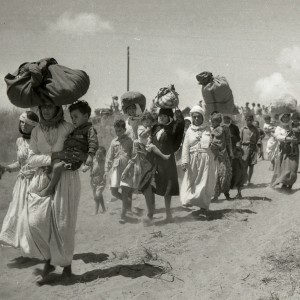(The info on this page has been written in 2022. We are aware of it not being up to date and are working on rewriting this page)
GEOGRAPHY
The Gaza Strip has a total area of approximately 360 km². The Gaza Strip is named after Gaza City. The area borders Israel in the north and east, Egypt in the south and the Mediterranean in the west. The coastline is about 40 km long, the border with Egypt about 11 km and the border with Israel about 51 km long. The main cities are Gaza City, Dayr al-Balah, Khan Younis and Rafah.
POPULATION
Around two million Palestinians live in the Gaza Strip, making it one of the most densely populated areas in the world. Three-quarters of the residents are refugees (or a descendants of them) who fled from the area that has been identified as Israel since 1948.
GOVERNANCE
The government of the area is de jure in the hands of the Palestinian Authority, but since June 2007 it has been transferred to Hamas. There are two border crossings via which people can travel in and out. These are Erez in the north on the border with Israel and Rafah in the south on the border with Egypt. The passage at Erez can only be used when an Israeli visa is available. Applications are usually rejected. The Rafah border crossing is rarely open. There is also a passage for goods: Kerem Shalom.
RECENT HISTORY
Until 1917 the Gaza Strip, like the entire region, was part of the Ottoman Empire. In 1917 - during the First World War - the area was conquered by the British. In 1921 Great Britain received the ruling from the League of Nations on the Mandate Region of Palestine, which included the territory of present-day Israel and the occupied Palestinian Territories.

The British left Palestine in 1948. The year before the newly established United Nations had divided Palestine into a Jewish and an Arab state.
Immediately after the departure of the British, the Zionist leaders proclaimed the State of Israel. The expulsion of the autochthonous Palestinians already set in motion by them has been further intensified. In total around 750.000 Palestinians have been made refugees. Only 150.000 of them remained in Israel. Palestinians refer to this event as Al-Nakba (the Catastrophe).
For more than ten years the Gaza Strip has been subjected to a stifling blockade by Israel. The residents are locked up there. In five years time Israel has also launched three major military offensives against the Gaza Strip: Christmas 2008 'Operatation Cast Lead' (1417 Palestinian deaths, 20.000 buildings destroyed or damaged); in 2012 'Operation Pillar of Cloud' (155 Palestinian deaths); and in 2014 'Operation Protective Edge'. Especially this last operation has been very bloody and devastating: 2.100 Palestinian dead and 10.850 Palestinians injured, including 3.300 children and 2.000 women; more than 17.000 buildings destroyed or severely damaged (Israeli people killed 73 people - 66 civilians and more than 500 were injured - 450 soldiers and 80 civilians).
As a result of all this the infrastructure of the Gaza Strip is in ruins: there is insufficient clean drinking water available and there is only a few hours per day electricity. Sewage is discharged into the Mediterranean untreated.
In the spring of 2018 non violent demonstrations along the border with Israel started in the Gaza Strip. Every Friday people are coming together. Families have set up tents and there is a positive mood. In an effort to nip this development in the bud, Israeli snipers shoot dumdum bullets at the nonviolent demonstrators. The tear gas they use against them contains a substance that causes the equivalent of a long-term epileptic seizure. Doctors are powerless. The use of dumdum bullets (which explode after hitting their target), ensure that, for many of the injured, a leg or arm needs to be amputated. The amputees have become very visible in daily life in Gaza. They put a disproportionately heavy burden on the shoulders of the society as a whole.
The Gaza Strip still has to deal with enormous deficits to this day and with a ban on the free movement of people and goods. Sonic bombs and a range of highly advanced military resources are deployed against a trapped civilian population. The Gaza Strip appears to be a testing ground for weaponry and for psychological methods of submission.
The political developments in this part of the world are perilous and concern us all.




